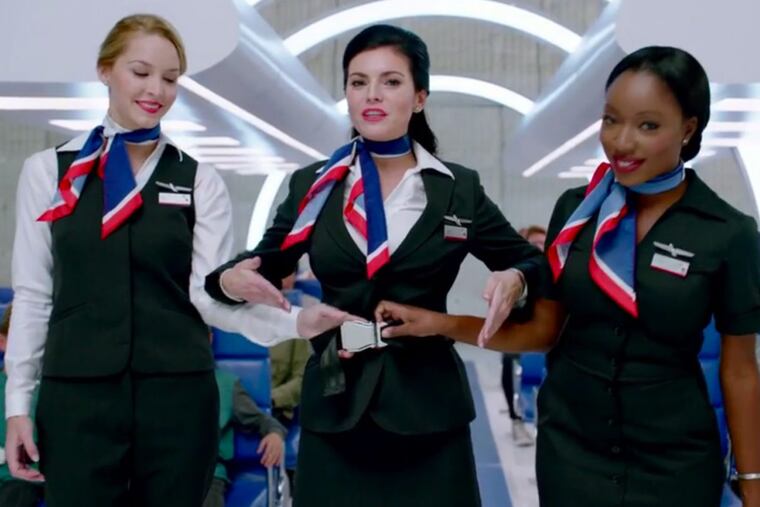Here's what to watch for as American Airlines employees take uniform battle to court
Two lawsuits filed in the second half of last year, one in California and the other in Illinois, are seeking to hold manufacturer Twin Hill responsible for health problems including rashes, headaches, and trouble breathing that flight attendants blame on their uniforms.

DALLAS — When American Airlines announced last month it had selected Lands' End to make new uniforms for tens of thousands of frontline employees, the Fort Worth-based carrier charted a course it hopes will bring an end to a controversy that has dogged the company for more than a year.
But for hundreds of flight attendants who say the current uniform makes them sick, the battle is just beginning.
Two lawsuits filed in the second half of last year, one in California and the other in Illinois, are seeking to hold manufacturer Twin Hill responsible for health problems including rashes, headaches, and trouble breathing that flight attendants blame on their uniforms.
The California suit is being pursued in Alameda County Superior Court and names just Twin Hill and parent company Tailored Brands as defendants. The other, filed in a federal court in Illinois, includes American as a defendant and is seeking class-action status.
The claims range from negligence to product liability to intentional infliction of emotional distress. The goal, attorneys say, is to get the uniforms out of the workplace as soon as possible and win compensation for employees whose health and livelihoods have been negatively impacted.
"We have to … prove that these uniforms are causing these reactions," said Stewart Weltman, one of the attorneys representing flight attendants in the Illinois lawsuit. "People were not reporting any of these illnesses. Then the uniforms are introduced into the workplace and now (thousands) of people are."
Thousands of complaints
More than 4,000 flight attendants, and at least a hundred pilots, have filed reports of uniform-related health problems with their unions since the uniforms were introduced in September 2016.
American and Twin Hill insist the uniforms are safe and say they've got the test results to prove it.
"All scientific testing performed to date clearly demonstrates that the uniforms that we delivered under our contract with American are safe and fit for their intended purpose," Twin Hill spokesman Diego Louro said in a statement.
American has offered several alternative uniform options for employees and, more recently, decided to start over with a new manufacturer.
"We filed a motion to dismiss American from the lawsuit and we look forward to the court's decision on our motion," spokeswoman Kristen Foster said. She said American is "committed to working with individuals on a case-by-case basis."
Making the case
Flight attendants and their attorneys suspect that chemicals used to manufacture the uniforms — which are designed to stand up to long-term use and the wear-and-tear of an active job — are behind the health problems.
But they don't know what specific chemical or combination of chemicals could be causing the health problems, setting up a challenging legal fight against two well-funded defendants.
They'll also have to contend with the specter of a failed 2013 lawsuit by Alaska Airlines flight attendants who unsuccessfully argued that their Twin Hill-manufactured uniforms were causing similar health problems.
Attorneys for American's flight attendants are confident they'll be able to avoid the pitfalls that derailed the Alaska case.
"In my opinion, they had the wrong experts putting on the wrong evidence with the wrong theory," attorney Andrew Spielberger, who's representing American flight attendants in California, said of the Alaska case. Spielberger said their case will focus on how clients reacted to the uniforms, rather than the specific toxicology.
"We're talking about the body's reaction to foreign chemicals, not the amount of poison or chemicals that might be in the body," he said.
Attorneys in both cases point to a recent report from the National Institute for Occupational Safety and Health that found "it is possible that textile chemicals" in the uniforms caused skin symptoms for some of the American employees.
But, Twin Hill countered that the report does not identify a "single chemical, an individual uniform component or combinations" responsible for the "constellation" of symptoms experienced by the flight attendants.
American and Twin Hill are taking steps to have the respective cases dismissed. If those efforts fail, it sets the stage for a legal fight that could outlast the Twin Hill uniforms, which are set to be replaced in late 2019 or early 2020.